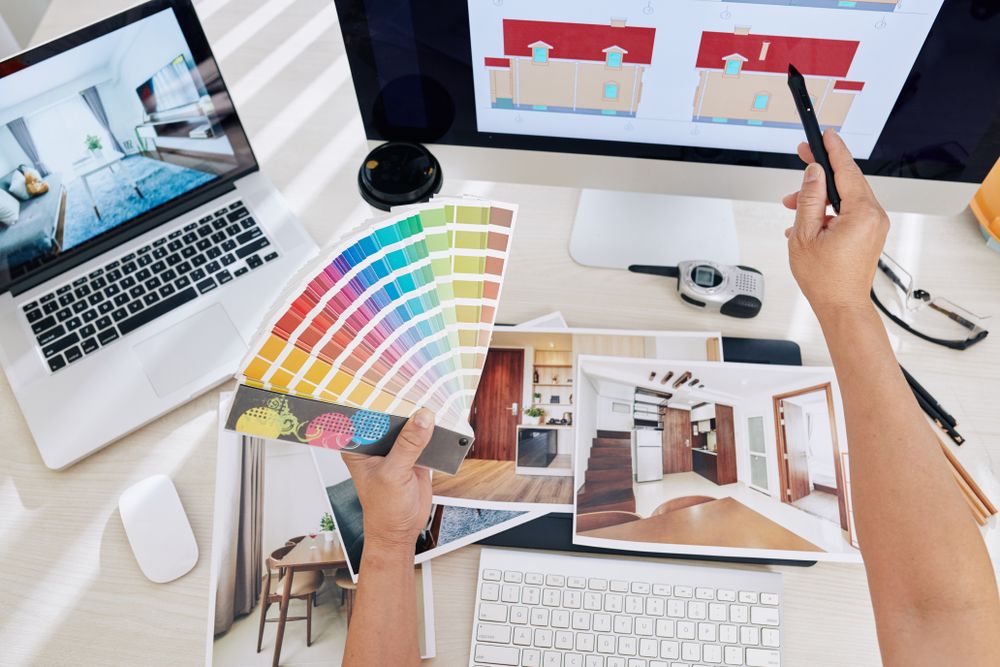Analogous Color Scheme: Meaning & How to Use It
Our life revolves around colors, and for graphic designers, colors play a crucial role in expressing their creative vision to the world. Take an example of maestro Claude Monet's famous painting 'Water Lilies.' This painting evokes natural and soothing expressions due to its unique high-key analogous color scheme. Finding the right color scheme that sets the right mood and tone for visual design is daunting. The process can be simpler and more organic with a fair understanding of the color wheel and 7 major color schemes. In this blog, we will understand the analogous color scheme and how to use the analogous color scheme in detail.
What is Analogous Color Scheme?
An analogous color scheme combines colors that are side by side on a color wheel. Analogous colors are common in nature, and the changing color of leaves in fall is the best example of analogous color scheme. This color scheme uses the close relationship of adjacent colors with each other to produce a harmonious and pleasing look.
What Are Some Analogous Colors Examples?
The analogous color scheme offers a balanced and serene look. Designers often use this scheme to emphasize specific expressions in their designs to convey themes such as nature, romance, or luxury. Here are some analogous colors examples to use in your artwork.
- Violet – Red-violet, violet, blue-violet
- Red – Red-orange, red, red-violet
- Orange – Yellow-orange, orange, red-orange
- Yellow – Yellow-green, yellow, yellow-orange
How to Use Analogous Color Scheme?
1. Pick Your Color
Pick the primary color based on the brand or logo of the client's design. For this example, we'll use #42B2BD (maximum blue-green)
2. Find the Analogous Colors
In the next step, we need to increase and decrease the hue value by 40 at least a couple of times, giving us analogous colors of our primary color. The hue value of 40 is chosen because of contrast, but you can choose it flexibly. Apart from this, you need to adjust brightness and saturation to achieve better contrast between hues.
3. Select a Color Palette
You will now have groups of three colors on an analogous color wheel. Each group can work as a suitable combination for different brands or websites, and choose the group that suits your client's brand or website. Each group evokes different feelings and emotions, so pick the right color palette that goes well with your client's brand.
4. Apply the Color Pallet
We should use the primary color maximum blue-green on call-to-action buttons. The dark blue can be applied to the titles and their subheadings, and we can use green in the page details.
5. Use Colors Strategically
Finding the right set of analogous colors is easy, but using them strategically in your design is a bit challenging and needs a keen eye and practice. Designers must maintain the subtlety between drawing viewers' attention rather than overwhelming them.
Conclusion
An analogous color scheme can be a great choice for a designer as it helps brands connect to their viewers on a visual and emotional level. Whether you are designing a website, creating a package design, or working on logos, an analogous color scheme can offer a fresh and natural look. ProAlley’s courses like Adobe Illustrator Essentials give a lot of impetus to using colors and strokes and offer hands-on knowledge on how to use and choose the right colors while designing.
Top Courses:
Game Design Certification | Online Graphic Design Courses With Certificates | Online Animation Courses with Certificates | Learn VFX Online | Premiere Pro And After Effects Course | Photoshop And Illustrator Course | Graphic Design Full Course | Adobe Illustrator Certification Course | Learn corelDRAW Online | Adobe XD Course in Hindi | CorelDRAW Course In Hindi | Image Processing Course Online | Photoshop Course Online In Hindi | Adobe XD Online Course | Indesign Online Course | Nuke Online Course | Adobe Premiere Pro Course | Premiere Pro Online Course | Motion Graphics In Hindi | Online Color Grading Course | Maya Animation Course Online | 3Ds Max Online Course | Maya Modeling Course | ZBrush Certification Course | Game Environment Design Course | After Effects in Hindi | Adobe Illustrator Course Hindi

